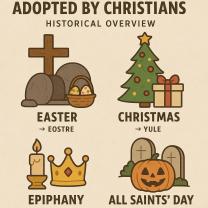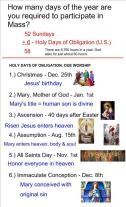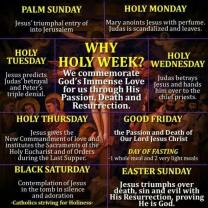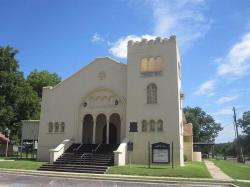What is the summary of the Book of Matthew?
The Gospel of Matthew is the first book of the New Testament in the Bible and is one of the four canonical Gospels, along with Mark, Luke, and John. Here is a summary of the Book of Matthew:
Authorship: Traditionally attributed to Matthew, one of Jesus' twelve disciples.
Date of Composition: Believed to have been written between AD 70 and AD 90.
Audience: Primarily directed towards a Jewish audience, emphasizing the fulfillment of Old Testament prophecies in Jesus as the Messiah.
Key Themes:
Jesus as the Messiah and King:
- Matthew presents Jesus as the long-awaited Messiah, the fulfillment of Old Testament prophecies, and the rightful King of the Jews.
Genealogy and Birth of Jesus:
- Matthew begins with the genealogy of Jesus, connecting him to the line of David, emphasizing his royal lineage. The account of Jesus' birth and early years is also found in Matthew.
Teaching and Parables:
- The Gospel contains many of Jesus' teachings, including the Sermon on the Mount (Matthew 5-7), which includes the Beatitudes and teachings on various ethical and moral matters. Parables, such as the Parable of the Sower and the Parable of the Good Samaritan, are also present.
Miracles and Healings:
- Matthew describes various miracles performed by Jesus, including healing the sick, feeding the multitudes, and walking on water. These miracles demonstrate Jesus' authority and divine nature.
Conflict and Opposition:
- The Gospel highlights the growing opposition Jesus faced from religious leaders and authorities. They questioned his teachings and sought to challenge his authority.
Crucifixion and Resurrection:
- Matthew narrates the events leading to Jesus' crucifixion, highlighting his trial, suffering, and death. The resurrection of Jesus is a central event, confirming his victory over sin and death.
The Great Commission:
- The Gospel concludes with the Great Commission, where Jesus instructs his disciples to go and make disciples of all nations, baptizing them in the name of the Father, the Son, and the Holy Spirit.
Distinctive Features:
Use of Old Testament References: Matthew frequently quotes and refers to the Old Testament, emphasizing Jesus as the fulfillment of prophecies and connecting his life to the broader biblical narrative.
Emphasis on the Kingdom of Heaven: The term "Kingdom of Heaven" is used extensively in Matthew, underscoring the nature of Jesus' message and mission.
The Book of Matthew provides a comprehensive and theological account of Jesus' life, teachings, death, and resurrection, emphasizing his role as the promised Messiah and the establishment of the Kingdom of Heaven.
Can you provide a concise summary of the content in the Book of Matthew?
The Gospel of Matthew is the first book of the New Testament and presents Jesus as the long-awaited Messiah of the Jewish people. It can be broadly divided into five sections:
Introduction (Chapters 1-4)
- Genealogy: Jesus' lineage is traced back to Abraham, showcasing his fulfillment of Jewish prophecy.
- Birth and Early Life: The miraculous birth of Jesus is recounted, with key figures like Joseph and the Magi playing significant roles.
- John the Baptist: John's role as Jesus' forerunner and the importance of baptism are highlighted.
- Temptation and Ministry: Jesus' temptation by the devil and the start of his public ministry through preaching and healing are presented.
Sermon on the Mount (Chapters 5-7)
- This central section outlines Jesus' core teachings, including the Beatitudes, the Lord's Prayer, and ethical guidelines for living.
- Jesus emphasizes righteousness, forgiveness, and love for one's enemies.
The Ministry of Jesus (Chapters 8-20)
- This section details Jesus' numerous miracles, teachings, and parables, demonstrating his power and divine authority.
- Well-known stories like the feeding of the five thousand, the calming of the storm, and the raising of Lazarus are included.
- Jesus also interacts with various groups, including disciples, Pharisees, and tax collectors.
Predictions of the Passion and Resurrection (Chapters 21-25)
- Jesus enters Jerusalem triumphantly, but also predicts his own suffering and death.
- The Last Supper with his disciples and the institution of the Eucharist are described.
- Jesus' betrayal by Judas, arrest, trial, and crucifixion are recounted in detail.
The Resurrection and Great Commission (Chapters 26-28)
- Jesus' resurrection from the dead is the central event, signifying victory over death and offering hope for eternal life.
- Jesus appears to his disciples and commissions them to spread the gospel message to all nations.
Key themes:
- Fulfillment of Prophecy: Matthew emphasizes Jesus as the fulfillment of Old Testament prophecies about the Messiah.
- Kingdom of Heaven: This central theme represents God's reign on earth, which Jesus inaugurates through his teachings and actions.
- Discipleship: Following Jesus and living according to his teachings is emphasized throughout the book.
- Love and Forgiveness: Jesus' teachings on love for God, neighbor, and even enemies are central to his message.
- Salvation: Through his death and resurrection, Jesus offers forgiveness for sin and the possibility of eternal life.
In summary, the Gospel of Matthew presents Jesus as the Messiah and King, offering a message of hope and salvation through faith in him.
I hope this is helpful. Let me know if you have any other questions.












